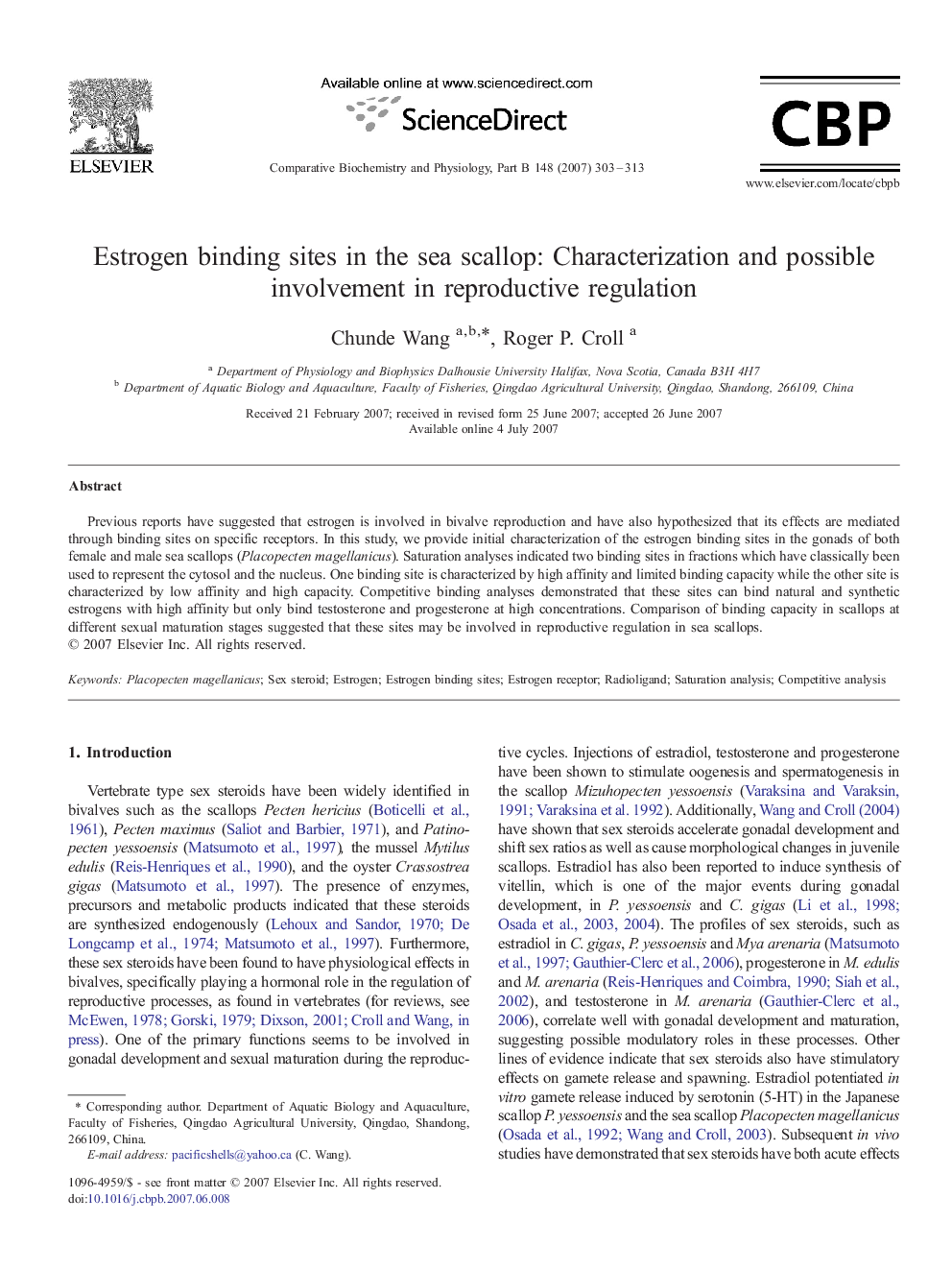| Article ID | Journal | Published Year | Pages | File Type |
|---|---|---|---|---|
| 1976555 | Comparative Biochemistry and Physiology Part B: Biochemistry and Molecular Biology | 2007 | 11 Pages |
Abstract
Previous reports have suggested that estrogen is involved in bivalve reproduction and have also hypothesized that its effects are mediated through binding sites on specific receptors. In this study, we provide initial characterization of the estrogen binding sites in the gonads of both female and male sea scallops (Placopecten magellanicus). Saturation analyses indicated two binding sites in fractions which have classically been used to represent the cytosol and the nucleus. One binding site is characterized by high affinity and limited binding capacity while the other site is characterized by low affinity and high capacity. Competitive binding analyses demonstrated that these sites can bind natural and synthetic estrogens with high affinity but only bind testosterone and progesterone at high concentrations. Comparison of binding capacity in scallops at different sexual maturation stages suggested that these sites may be involved in reproductive regulation in sea scallops.
Keywords
Related Topics
Life Sciences
Biochemistry, Genetics and Molecular Biology
Biochemistry
Authors
Chunde Wang, Roger P. Croll,
